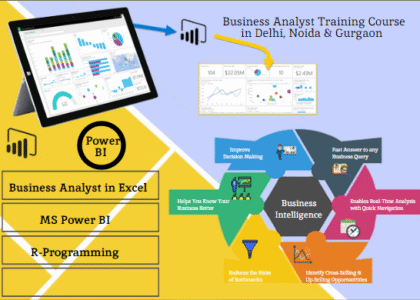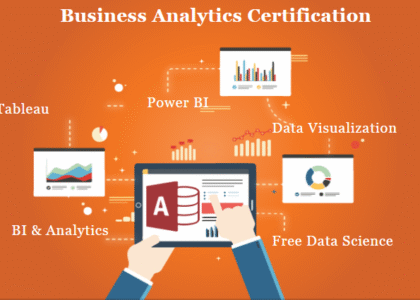The APEGS Report is more than just a formal document—it’s a testament to your engineering journey, demonstrating how your competencies align with professional standards. Through the apegs competency assessment, professionals must showcase their abilities in various domains, especially their problem-solving techniques, decision-making processes, and ethical conduct. This article explores how the APEGS Report reflects your actual work, particularly your ability to navigate and resolve complex engineering problems effectively.
Understanding the APEGS Report Framework
The APEGS Report serves as a critical document submitted as part of the apegs competency assessment. It evaluates how well you meet the required competencies by drawing directly from your real-world experiences. Every example provided must reflect personal involvement and a depth of professional engagement.
Structure of the Report
The structure of an APEGS Report follows a competency-based approach. Applicants must write responses under various categories, each targeting a specific area of professional practice. These include:
- Technical competence
- Communication
- Project and financial management
- Team effectiveness
- Professional accountability
- Social, economic, environmental, and sustainability considerations
- Personal continuing professional development
Each competency requires a detailed example from your engineering practice that demonstrates not just what you did, but how you thought through the process.
Purpose Behind the Report
The goal is to validate that an applicant has progressed from academic learning to professional application. It is not about writing theory or listing job duties; it is about proving how you think, analyze, decide, and solve within real projects.
Translating Work into Competency Examples
Capturing Real-World Experiences
One of the most critical elements of the APEGS Report is how well it captures the nuances of your work experiences. It requires the translation of day-to-day responsibilities into specific, measurable outcomes that map directly to the competency criteria.
For instance, if you handled quality control for a manufacturing process, your report shouldn’t just state that. Instead, it should show how you diagnosed performance issues, implemented a better inspection process, and improved efficiency.
Linking Tasks with Outcomes
A well-written report directly connects the task performed to a result or outcome. This allows assessors to evaluate not only what was done but why it mattered and how it contributed to the project’s success. This is especially important in the technical competency section, where solving technical challenges with innovative approaches is key.
Showcasing Problem-Solving Capabilities
Defining the Problem Clearly
Each situation used in your APEGS Report should begin with a clear explanation of the problem or challenge. This helps reviewers understand the context of your decision-making process. Whether it was a design flaw, resource limitation, or stakeholder conflict, it must be specific and relevant.
Outlining Analytical Steps
Once the problem is stated, your narrative should explain how you analyzed it. This may involve simulations, data interpretation, risk assessments, or stakeholder consultations. Your apegs competency assessment relies heavily on this logical flow to determine whether your problem-solving follows engineering principles.
Implementing the Solution
This section should detail the solution you proposed and how it was executed. Reviewers are looking for creativity, efficiency, and adherence to ethical and safety standards. Describe how you monitored results, handled any challenges during implementation, and adjusted if necessary.
Evaluating Results and Learning
End your example with an evaluation of the results and personal reflection. What did the outcome look like? What lessons did you learn? Did it influence your future decisions or project strategies?
Emphasizing Critical Thinking and Initiative
Demonstrating Independent Judgment
In your APEGS Report, it’s important to show moments where you exercised judgment rather than just followed orders. For example, choosing between two engineering methods or balancing cost and safety considerations both demonstrate thoughtful independence.
Proactive Identification of Risks
APEGS values applicants who can foresee and mitigate risks. Include cases where you anticipated problems before they happened, such as scheduling delays or system incompatibility. Describe how your proactive steps prevented issues and improved efficiency.
Ethical Decision-Making
Any engineering report must reflect adherence to ethical standards. If you encountered a situation that involved conflicting interests or unclear boundaries, describe how you addressed it while maintaining transparency, honesty, and public safety.
Reflecting Soft Skills Through Competencies
Effective Communication
Even the most brilliant technical minds must communicate their ideas clearly. Your apegs competency assessment will examine how you conveyed complex ideas to stakeholders, wrote technical reports, or presented solutions to clients. Include examples of how your communication led to positive project outcomes.
Team Collaboration
Teamwork is essential in engineering. Use examples where you collaborated with multi-disciplinary teams, managed conflicts, or led brainstorming sessions. This gives reviewers insights into your interpersonal and leadership abilities.
Demonstrating Project and Time Management
Planning and Scheduling Work
The APEGS Report should include examples where you scheduled project activities, tracked timelines, and adjusted resources to meet deadlines. These scenarios show you understand how engineering projects progress and how to manage constraints.
Financial Awareness
While you may not always manage project budgets, awareness of cost implications is critical. Demonstrate how you selected cost-effective materials, minimized waste, or aligned technical solutions with financial goals.
Highlighting Continuous Improvement and Growth
Lifelong Learning
Your report should mention how you stay updated with new tools, standards, or technologies. Whether it was a training session, webinar, or self-directed learning, this shows your commitment to professional development.
Applying Feedback
Competent engineers don’t just tolerate feedback—they use it to improve. Include examples where you took feedback from peers or clients and modified your methods accordingly. This highlights your adaptability and dedication to excellence.
Review and Refinement of the APEGS Report
Getting Peer Input
Before submitting your report, getting feedback from experienced professionals can refine your examples. This ensures your report is not just technically sound but also aligned with APEGS expectations.
Clarity and Precision
Reviewers value clear, concise, and focused writing. Avoid excessive jargon or vague descriptions. Ensure each example directly supports the competency it is meant to address.
Conclusion
The APEGS Report is not a procedural hurdle—it’s a showcase of your engineering journey, values, and decision-making abilities. Through the apegs competency assessment, you reflect the real impact of your work, from solving technical challenges to collaborating effectively and learning continuously. By clearly articulating your roles, problem-solving strategies, and outcomes, you give reviewers confidence in your readiness for professional status.
A thoughtfully prepared APEGS Report mirrors not just what you’ve done but who you are as a professional—capable, ethical, reflective, and continually improving.
Frequently Asked Questions (FAQs)
What is the purpose of the APEGS Report in the competency assessment?
The APEGS Report evaluates your ability to apply engineering knowledge in real-world situations. It proves your readiness to practice professionally by showcasing how you solve problems, manage projects, and interact with teams under professional standards.
How detailed should my examples be in the APEGS Report?
Each example should be specific and describe your actions, decisions, and outcomes clearly. Use structured narratives that explain the problem, how you approached it, the solution, and what results were achieved through your direct involvement.
Can I include teamwork in my APEGS competency assessment examples?
Yes, but you must highlight your specific role within the team. Focus on what you contributed individually, how you influenced the project’s direction, and what decisions or solutions were based on your judgment or expertise.
How many competencies do I need to cover in the APEGS Report?
The APEGS Report must address 34 competencies across several categories. Each requires a separate example from your work history that meets the competency’s criteria, demonstrating your ability to function at a professional level.
What are common mistakes to avoid in the APEGS competency assessment?
Avoid vague examples, excessive technical jargon, or generic descriptions. Never submit a report with spelling or grammar errors. Also, don’t claim credit for work done by others—reviewers expect honest, clear, and professional submissions.






